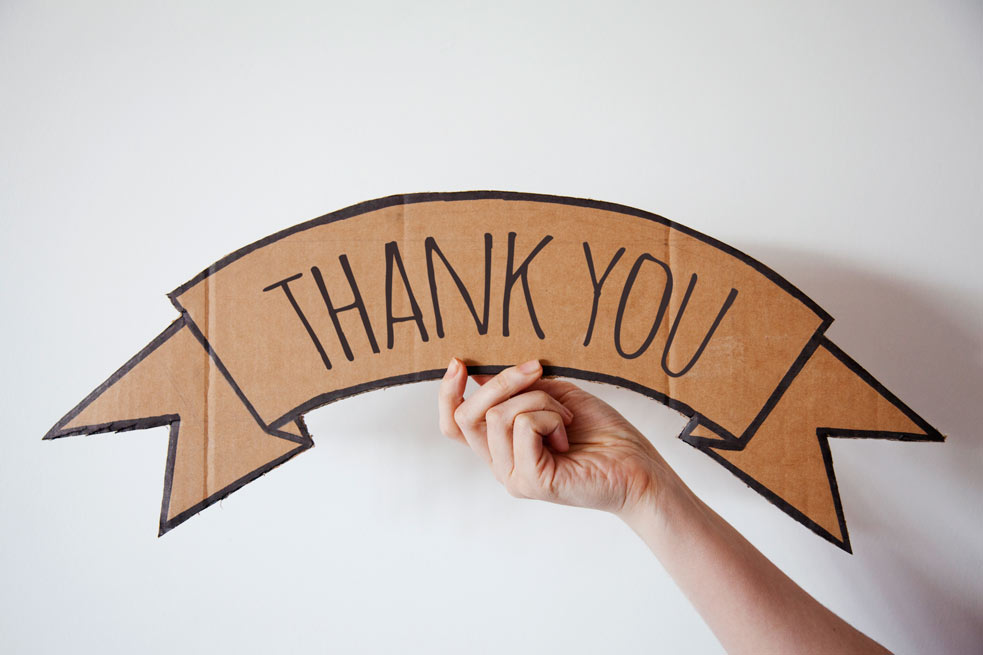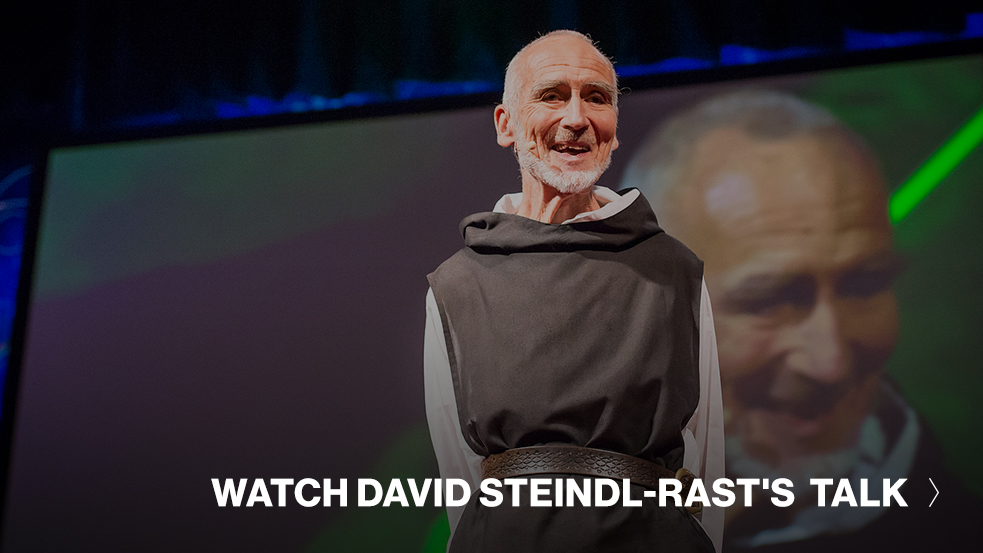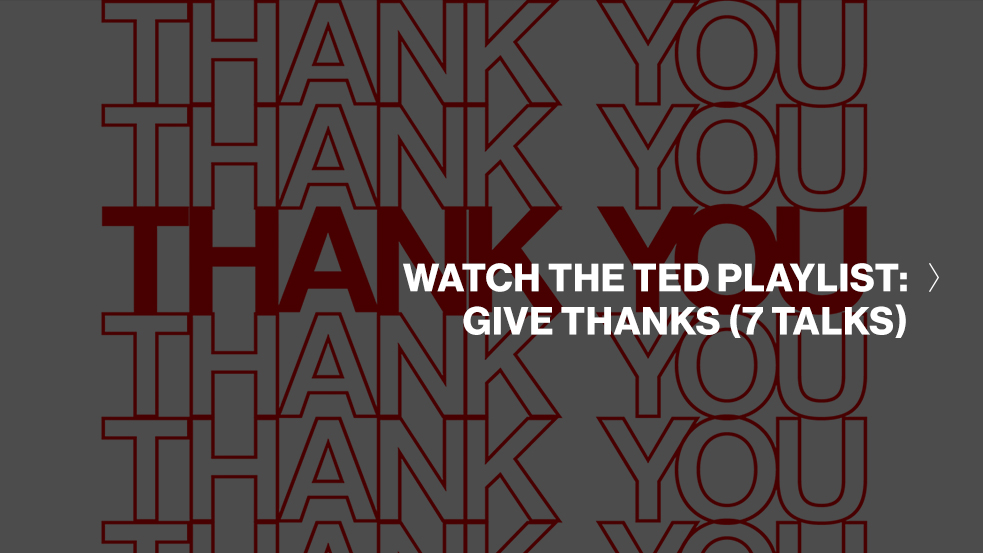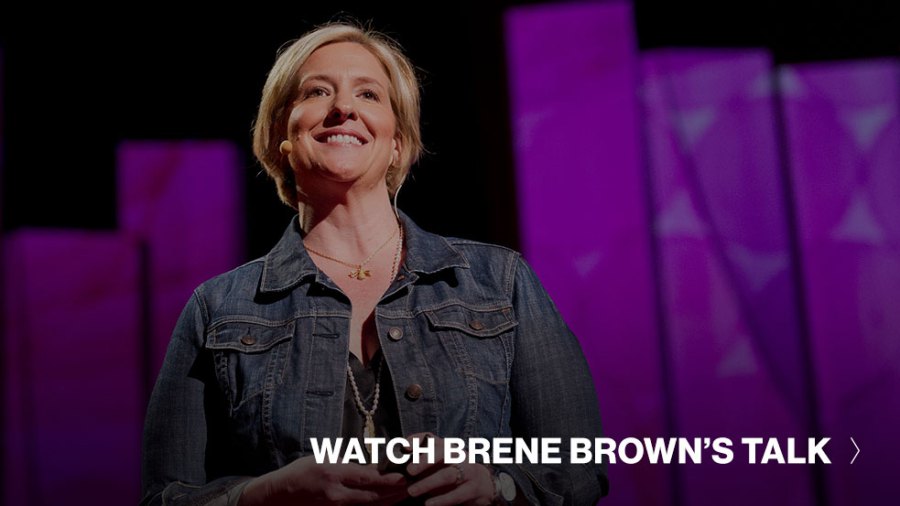 Gratefulness isn’t always something that comes easily. Below, some reading and watching to get you into a thankful headspace.
Gratefulness isn’t always something that comes easily. Below, some reading and watching to get you into a thankful headspace.
- Watch: “Want to be happy? Be thankful.” This TED Talk from David Steindl-Rast is the perfect Thanksgiving appetizer. In it, the Benedictine monk and interfaith scholar talks about what, exactly, it means to be grateful and offers a simple process for living gratefully: stop, look and go. Instead of rushing through life, he asks us to see the opportunities that are available and open ourselves up to them. This isn’t an idle or even simply personal concern: gratefulness has broad social implications. “If you’re grateful, you’re not fearful, and if you’re not fearful, you’re not violent. If you’re grateful, you act out of a sense of enough and not out of a sense of scarcity and are willing to share,” Steindl-Rast says.

. - Read: “A Serving of Gratitude May Save the Day.” This 2011 article in The New York Times shares that gratitude “has been linked to better health, sounder sleep, less anxiety and depression, higher long-term satisfaction with life and kinder behavior toward others, including romantic partners.” From there, writer John Tierney consults psychologists whose work falls in the area of gratitude for tips on how to feel more of it during the hectic Thanksgiving season. It’s a very cool survey of the research going on in this area.
. - Watch: Jimmy Fallon’s Thank You Notes. In this long-standing segment on Friday night episodes of Late Night with Jimmy Fallon, the star of the show picks up a pen and writes thank you notes as piano music swells in the background. In recent episodes, Fallon has given sarcasm-tinged thank yous to peer pressure and the nub at the bottom of a banana. In fact, this segment is so popular that it even became a book. As the Amazon page reads, “Jimmy Fallon is very thankful. And in this first book to come from his TV show, he expresses his gratitude for everything from the light bulb he’s too lazy to replace to the F12 button on his computer’s keyboard.” Yes, there is a volume 2.
. - Read: “Are You Thankful or Are You Grateful?” And in an essay commissioned for Thanksgiving 13 years ago, David Steindl-Rast describes the difference between thankfulness and gratefulness. “In a moment of gratefulness, you do not discriminate. You fully accept the whole of this given universe, as you are fully one with the whole,” he writes. “In the very next moment, when the fullness of gratitude overflows into thanksgiving, the oneness you were experiencing is breaking up. Now you are beginning to think in terms of giver, gift and receiver. Gratefulness turns into thankfulness. This is a different fullness. A moment ago you were fully aware; now you are thoughtful. Gratefulness is full awareness; thankfulness is thoughtfulness.”
. - Watch: “7 TED Talks to help you give thanks.” From Louie Schwartzberg’s incredible time-lapse photography that inspires deeper reflection on the wonder of nature, to Tania Luna’s inspiring reflection on how a childhood of scarcity allowed her to fully appreciate life as an adult—this playlist of talks is sure to leave you in the right spirit for gratitude.

. - Read: Zen Habits. In 2005, Leo Babauta — a father of six kids then living in Guam (he’s now in San Francisco) — radically changed his life. He began focusing on spirituality by honoring his emotions, his physical well-being, and the current moment. Soon after, he began this blog, in which he shares his experiences and offers tools for becoming more mindful. Like this: “Put the word ‘Breathe’ as a screensaver or desktop pic, or put it up as a note on your wall or fridge or on your desk. Then do it every time you see the word.”
. - Listen to: Tara Brach’s podcast. After college, Tara Brach spent 10 years in an ashram, then attended a Buddhist Insight Meditation retreat. “I knew that this was a path of true freedom,” she says on her website. Now armed with a Ph.D. in clinical psychology and a five-year Buddhist teacher training program, Brach works as a psychotherapist and meditation teacher and runs the Insight Meditation Community of Washington, DC. She offers free recordings of her beautiful talks and meditations. They are also available on iTunes.
. - Read: thxthxthx: Thank Goodness for Everything. Leah Dietrich is brilliant — and hilarious — at being thankful for the mundane. On what look like oversized Post-It notes, she scrawls hand-written thank you notes that raise a chuckle. This effort started as a blog, then became a book and a Twitter feed. A classic, to give you a taste: “Dear Words, Thank you for letting me make art with you. I can’t really draw well, so you’re a big help. See you soon. Love, Leah.”
. - Watch: Brené Brown on how increasing vulnerability leads to gratitude. Social scientist Brené Brown became a TED superstar for sharing her observations on vulnerability, gleaned from thousands of interviews. Something she didn’t expect to find during the course of her research: “I did not interview in all that time a person who would describe themselves as joyful or their lives as joyous who did not actively practice gratitude. For me, it was very counterintuitive.” Watch her TED Talk, and then hear her explanation of the relationship between joy and gratitude in this short video.

. - Watch: Room to Breathe. The 2012 documentary Room to Breathe follows a class of San Francisco middle school students as they undergo training by a therapist from Mindful Schools. This Oakland-based nonprofit helps make mindfulness a part of education, defining it as “a particular way of paying attention. It is the mental faculty of purposefully bringing awareness to one’s experience.”
. - Read: It’s Easier Than You Think. In this book, Sylvia Boorstein, a Jewish-Buddhist meditation teacher and psychotherapist, demystifies spirituality and mindfulness. “Being a meditator and developing equanimity do not mean becoming weird,” she writes at the outset. The idea: spirituality and mindfulness can coexist with drinking coffee or being a passionate football fan. It isn’t about the tools you use or what you do, it’s how you do it.
. - Study: A step-by-step guide to gratefulness. David Steindl-Rast and his colleagues run Gratefulness.org, a website that is full of wisdom on the art of thankfulness. One of the most interesting things on the site: this collection of articles, which is designed as a journey of personal reflection or as a guide for group study.
This piece was originally posted in November of 2013. It was updated for Thanksgiving 2014.
Comments (38)
Pingback: Sharing the Love: 11 self-help links - Everyday ArtistryEveryday Artistry
Pingback: A non-cheesy guide to gratefulness: What to read and watch | TED Blog | SAHC Class70
Pingback: {Inspiration For You} Inspiring Blog Posts to Read | Michaela Loves
Pingback: A New Year’s Letter on the Power of Positivity | The NICE Reboot Book Blog on Entrepreneurship in the iEra
Pingback: Stop to Smell the Turkey | the vast specific
Pingback: A non-cheesy guide to gratefulness: What to read and watch | Words for the Year
Pingback: Links to ideas - desummarize
Pingback: Daily Bamboo Innovator Insight: Tues 25 Nov 2014 – Why You Can’t Invest Like Warren Buffett – And Shouldn’t Try; A non-cheesy guide to gratefulness: What to read and watch | Bamboo Innovator
Pingback: Growth from adversity | Joyous Babble
Pingback: Snow Flakes |
Pingback: http://blog.ted.com/2013/11/27/a-non-cheesy-guide-to-gratefulness-what-to-read-and-watch/ | Polenta